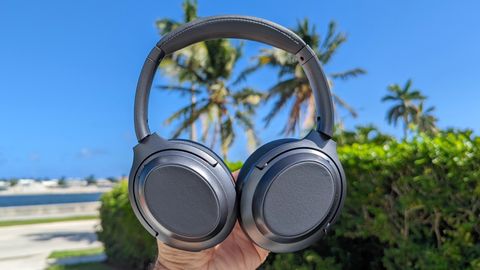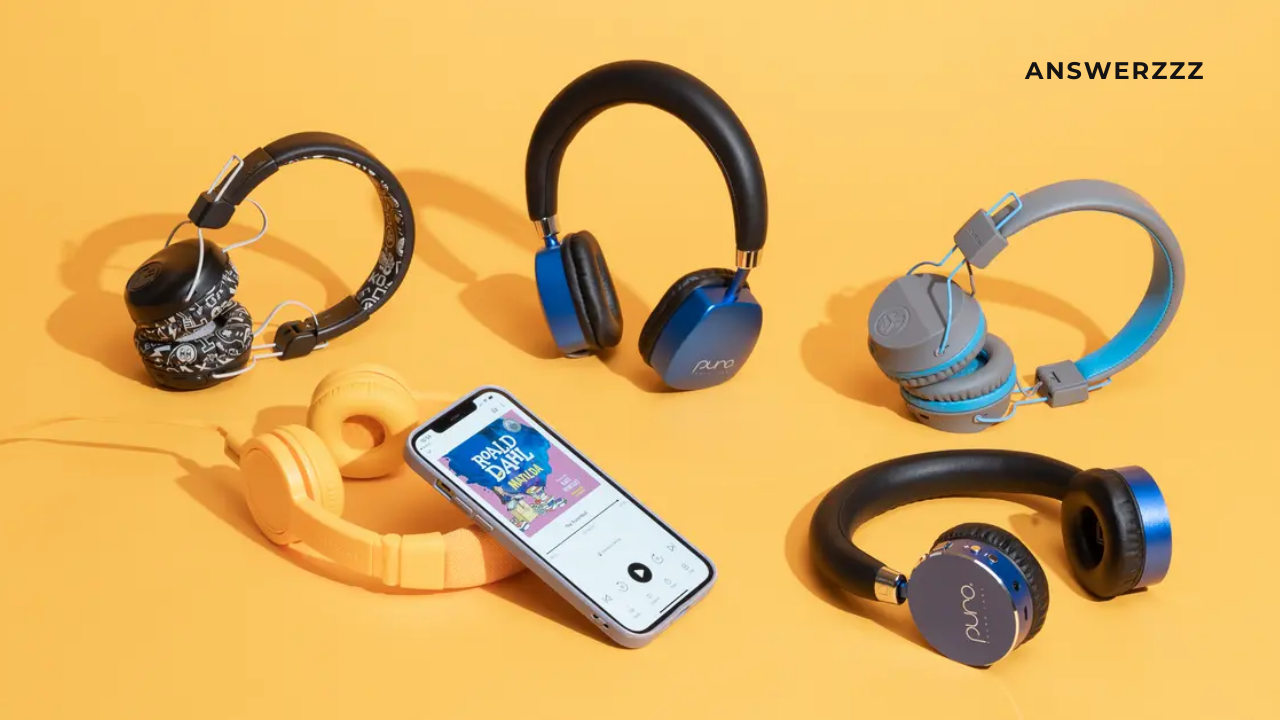When it comes to studying, concentration is key, and one of the best ways to eliminate distractions is by using headphones. For students, the right pair of headphones can enhance focus, improve productivity, and even provide an immersive learning experience. But with so many options on the market, it can be challenging to decide which type of headphones to invest in. Should you go for noise-cancelling headphones that block out external sounds or wireless earbuds that offer convenience and portability? In this comprehensive review, we’ll compare noise-cancelling headphones and wireless earbuds, discussing their features, pros, cons, and which is best for students.
1. Why Headphones are Important for Students

Headphones serve as an essential tool for students in today’s fast-paced world. Whether you’re studying in a busy library, working from home, or commuting to campus, headphones can help block out distractions and create a focused environment for learning. Listening to music, podcasts, or audiobooks can also be an excellent way to absorb information while taking calls and participating in virtual lectures has become commonplace. However, the type of headphones you choose can significantly impact your experience, both in terms of sound quality and overall comfort.
Two popular types of headphones that students typically use are noise-cancelling headphones and wireless earbuds. Each comes with its unique set of features, and understanding their differences is vital to making an informed decision.
2. Noise-Canceling Headphones: Features and Benefits
How Noise-Canceling Technology Works
Noise-cancelling headphones are designed to reduce or eliminate unwanted ambient sounds through active noise cancellation (ANC) technology. They use built-in microphones to detect external noises, such as chatter, traffic, or machinery sounds and then produce sound waves that are the exact opposite (antiphase) of those noises, effectively cancelling them out.
This technology allows users to enjoy a more peaceful environment, even in noisy or crowded settings. While noise-cancelling headphones can significantly reduce low-frequency sounds like engine noise or air conditioning hum, they are not always as effective at eliminating high-frequency noises, such as voices.
Advantages of Noise-Canceling Headphones for Students
Men’s Tech Gear 2024: In-Depth Reviews of the Latest Gadgets and Devices
- Enhanced Focus: The primary benefit of noise-cancelling headphones is their ability to block out external distractions. Whether you’re in a noisy library, a bustling café, or a dorm room with loud roommates, ANC headphones help create a bubble of silence, allowing you to focus solely on your studies.
- Better Sound Quality: With fewer environmental noises to compete with, you can enjoy clearer sound quality, which is essential for students who listen to audiobooks, educational podcasts, or online lectures. Noise-cancelling headphones often deliver better sound fidelity compared to regular headphones or earbuds.
- Comfortable for Long Sessions: Many noise-cancelling headphones are over-ear models with padded ear cups, providing a comfortable fit that can be worn for extended periods without causing discomfort or ear fatigue. This is particularly useful for students who spend hours studying or attending virtual classes.
- Improved Listening Experience: Noise-canceling headphones not only improve focus but also enhance your overall listening experience by allowing you to enjoy your music, lectures, or podcasts at lower volumes. This can help protect your hearing in the long term.
Drawbacks of Noise-Canceling Headphones
- Bulkier Design: While comfort is a key advantage, the over-ear design of noise-cancelling headphones can be bulky and heavy compared to wireless earbuds. This makes them less portable, which might be an issue for students who need to carry their headphones in a backpack or commute frequently.
- Higher Price Point: Noise-canceling headphones tend to be more expensive than other types of headphones. Brands like Bose, Sony, and Sennheiser offer high-quality models, but they often come with a premium price tag. Budget-conscious students may find it challenging to justify the investment.
- Limited Connectivity: Many noise-cancelling headphones rely on Bluetooth for wireless connectivity, but some models also offer wired connections. If you’re planning to use them for classes or exams, make sure the headphones are compatible with your devices.
3. Wireless Earbuds: Features and Benefits
Key Features of Wireless Earbuds
Wireless earbuds, such as Apple AirPods, Samsung Galaxy Buds, or Sony WF-1000XM series, are compact, lightweight, and highly portable. They connect to your device via Bluetooth, eliminating the need for tangled wires. Most modern wireless earbuds come with features like touch controls, voice assistants, and even active noise cancellation.
Some of the best wireless earbuds also include water-resistant designs, making them suitable for workouts or commuting. They offer excellent freedom of movement, making them a popular choice for active students who are always on the go.
Advantages of Wireless Earbuds for Students
- Portability and Convenience: Wireless earbuds are incredibly compact and easy to carry around. They fit into your pocket or bag without taking up much space, making them ideal for students who need to travel light. Their small size also means they don’t require much storage space when not in use.
- Quick Pairing and Easy Controls: Wireless earbuds often feature intuitive controls for managing music playback, adjusting volume, or answering calls. With Bluetooth connectivity, pairing these earbuds to your devices is fast and straightforward, reducing setup time.
- Comfort and Fit: Wireless earbuds are designed to fit securely in your ears without causing discomfort, even during extended use. Many models come with different ear tip sizes to ensure a snug and personalized fit, which is particularly useful for students who are constantly on the move.
- Versatile Use: In addition to studying, wireless earbuds can be used during exercise, commuting, or even in the gym. Some models are also water-resistant, making them a great all-around option for active students.
Drawbacks of Wireless Earbuds
- Sound Quality Variability: While some premium wireless earbuds provide excellent sound quality, many lower-priced models fall short in terms of bass response, treble clarity, and overall sound fidelity. If you’re a student who requires top-tier audio for lectures or study material, wireless earbuds may not always meet your expectations.
- Shorter Battery Life: Compared to larger headphones, wireless earbuds typically have a shorter battery life. Most models offer around 4-8 hours of continuous use, although some come with a charging case that can extend this time. For students who need headphones for long study sessions, this may be a limiting factor.
- Risk of Losing One Earbuds: Due to their small size, wireless earbuds can be easily misplaced. If you’re the type of person who frequently loses things, this could be a significant drawback.
4. Noise-Canceling Headphones vs. Wireless Earbuds: The Showdown

Sound Quality Comparison
In general, noise-cancelling headphones tend to provide superior sound quality compared to wireless earbuds. The larger ear cups in headphones allow for better sound drivers, resulting in richer bass and clearer treble. The active noise cancellation also ensures that external distractions don’t interfere with your listening experience.
However, some premium wireless earbuds come equipped with ANC technology and can deliver excellent sound quality, although they may not match the full depth of over-ear headphones. It’s also worth noting that wireless earbuds are more prone to distortion at higher volumes, while headphones often have a better range.
Comfort and Fit
For comfort, noise-cancelling headphones usually win due to their over-ear design, which provides a more immersive and comfortable fit for long hours of studying. The padded ear cups help reduce ear strain.
On the other hand, wireless earbuds are small, lightweight, and ideal for short listening sessions. They might not be as comfortable for prolonged use as headphones, but they’re still quite comfortable for everyday tasks like listening to music or attending virtual lectures.
Portability and Convenience
When it comes to portability, wireless earbuds are the clear winner. Their small size and the included charging case make them easy to carry around, whether you’re heading to class or commuting. Noise-cancelling headphones, although offering superior sound and comfort, are bulkier and less convenient to transport.
Battery Life
Noise-cancelling headphones typically offer 15-30 hours of battery life, making them a great choice for students who need headphones for extended study sessions. Wireless earbuds, however, offer less battery life, usually between 4-8 hours. However, their charging cases provide additional charges on the go, which partially mitigates this limitation.
Price Comparison
Noise-cancelling headphones are generally more expensive than wireless earbuds, especially when purchasing premium brands like Bose or Sony. Wireless earbuds can be found at a variety of price points, from budget options to premium models, making them a more affordable option for students.
5. Which is Best for Students?
Review of the Best Laptops for Students: Find the Perfect Fit for Your Needs
Academic Environment Considerations
In a quiet study environment, noise-cancelling headphones are likely the best choice for students. The ability to block out distractions and immerse yourself in the material is invaluable during long study sessions or virtual classes. However, in more dynamic environments like coffee shops or libraries, wireless earbuds with passive noise isolation might be sufficient.
Travel and Commuting
For students who commute or travel frequently, wireless earbuds are often more practical due to their compact size and portability. They’re also a good option if you need to quickly move between classes, grab a coffee, or run errands without taking up too much space in your bag.
Long Study Sessions
For extended study sessions, noise-cancelling headphones are a more comfortable option. Their larger ear cups and adjustable headbands are designed for hours of use, and they provide superior sound quality to help you stay focused. Wireless earbuds might be better for short bursts of study time or casual listening.
Both noise-cancelling headphones and wireless earbuds offer distinct advantages for students. The right choice largely depends on your specific needs. If you prioritize sound quality, comfort, and the ability to block out distractions during long study sessions, noise-cancelling headphones are an excellent option. On the other hand, if you value portability, convenience, and versatility, wireless earbuds may be the better fit.
Ultimately, it’s important to consider your academic lifestyle, budget, and how you plan to use the headphones. Whatever you choose, investing in a good pair of headphones can greatly enhance your productivity, focus, and overall student experience.




